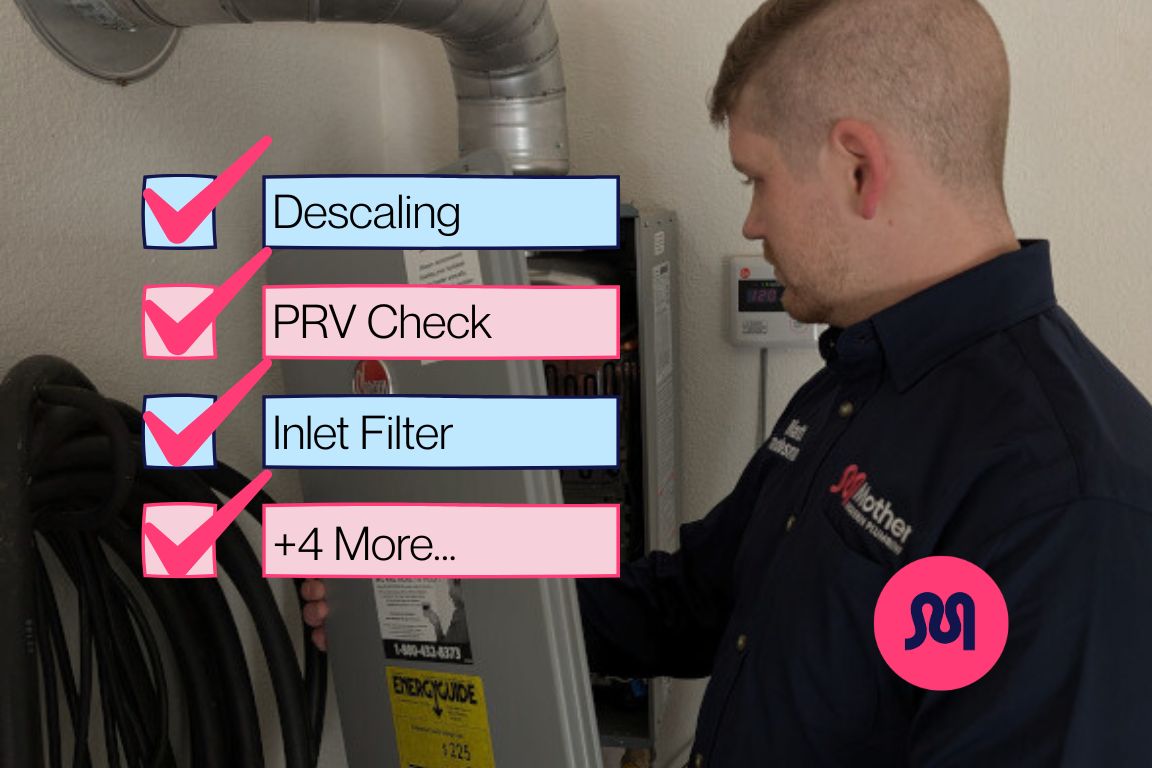Choose The Best Dallas Slab Leak Repair Option For You
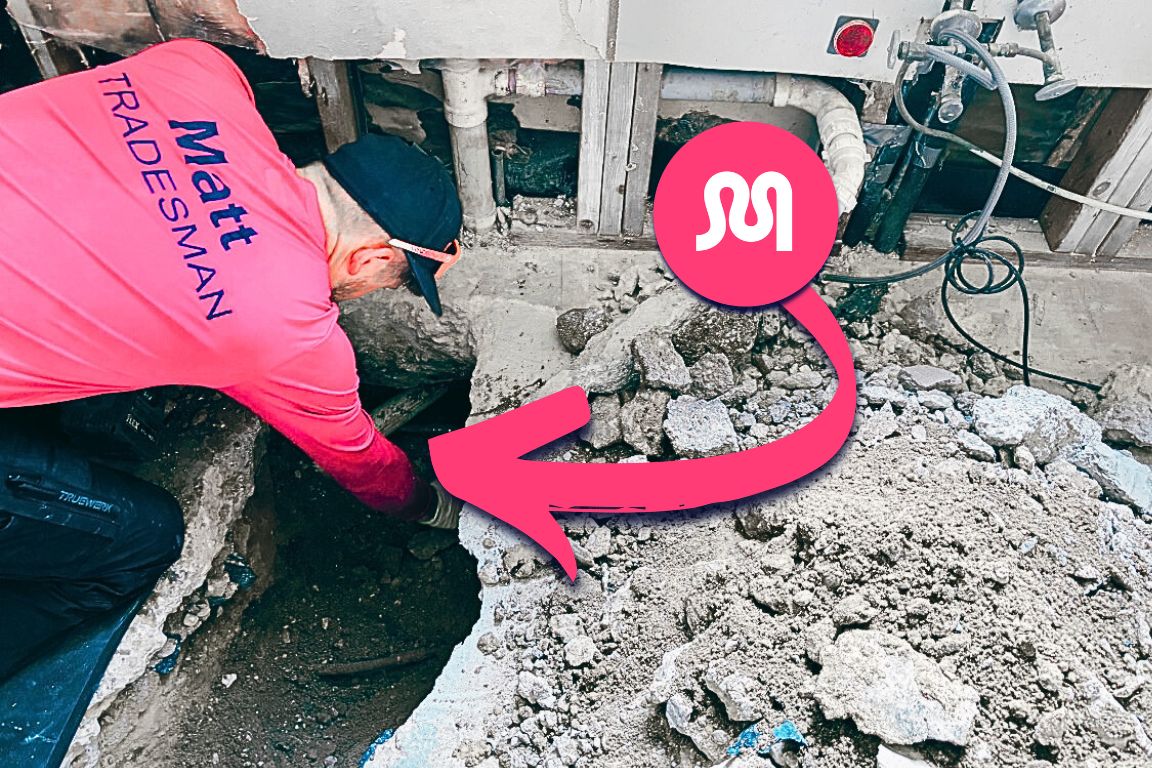
table of contents
table of contents
You notice a damp spot on your floor, the sound of running water when all your taps are off, or a growing crack in the wall near your concrete foundation. The signs are there: your Dallas home has a slab leak.
You got a quote from your usual plumber, but it seems a little steep — are you really getting the best solution for your slab leak repair project?
We’re Mother, and we do 4-5 slab leak repairs every week in Dallas homes. We combined a century of local expertise to help you understand the 4 most common types of slab leak repair and replacement, and which is the best option for your unique project.
Our team brings nearly a century of Dallas plumbing experience to every service call. Homeowners trust us to identify the precise location of your leak, use non-invasive diagnostic tools, and provide the single best repair solution for every home.
{{slab-leak-repair="/services/slab-leak-repair"}}
Find the Best Repair Option for Your Slab Leak Issue — Fast
Don’t have time to read the full article? Use this helpful table to discover the best type(s) of slab leak repair for your specific problem.
We’ve paired 4 common causes of Dallas slab repair issues with the best service options to address the issue. This table also provides context for when a slab leak solution isn’t effective for specific types of damage.
Keep reading for more context and in-depth information!
TABLE: Best Slab Leak Repair Options for Specific Types of Damage and Layout
*Rerouting your pipes around slab leak damage is highly dependent on your roof type: cathedral ceilings don’t support this. Read more in the slab leak reroute section below.
**Tunnel repair of pipe that contain electrolysis damage is difficult due to multiple corrosion spots. Read more in the tunnel repair section below.
Why Are Slab Leak Repairs So Expensive?
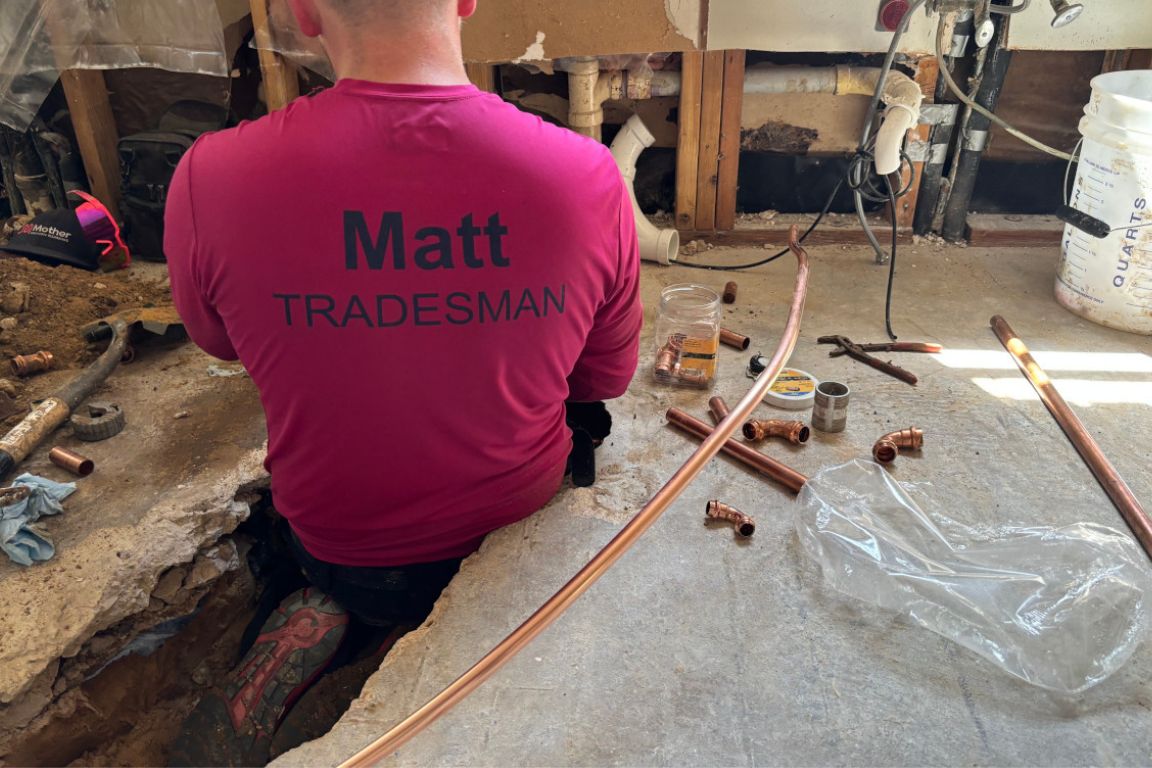
Dallas slab leak repair costs are driven by 2 primary factors: the intensity of labor, and complexity of repairs.
Within these 2 factors, there are 5 key points that determine the cost of your project:
- Locating the leak
- Repairing the leak
- Restoration (backfilling, repairing drywall, etc.)
- Accessibility of damaged pipe sections
- Excavation (if necessary)
Slab leak repair labor costs: the primary cost driver in Dallas
Labor costs make up the bulk of your Dallas slab leak repair quote. These rates increase in high-demand locations (like urban areas and cities) and the accessibility of your damaged pipe section.
The cost of slab leak repair labor is broken down into 4 categories:
- Hourly wages
- Project timeline (duration of job)
- Expertise required
- Intensive labor (excavation, tunneling, breaking the slab)
Current Dallas plumbing repair quotes that involve excavation are roughly 3-5% higher than in suburban and rural Texas communities. This is due to the increased cost of living in DFW and a higher demand for services.
As of this publication, our internal data shows the average cost of slab leak repair in Dallas is roughly equal to the national average.
Complexity of repairs: how accessible is your leak?
While labor is the biggest chunk of your slab leak repair budget, the complexity of repairs drives the biggest increases and decreases in cost.
Here are 4 diagnostic questions local plumbers consider when calculating the cost of your slab leak repair:
- Location: Is the leak under your concrete slab? Next to the slab? Or is the affected pipe within the slab itself?
- Accessibility: How much excavation is required? Do we need to cut into the slab? Is the leak in a difficult to reach location (i.e. within the slab or under a complex structure)?
- Repair option: Is the leak best remediated with a tunnel repair, in-wall repair, capping the water line, or rerouting your entire pipe?
- Related services: After the project is complete, will the site require foundation repair, flooring repair or drywall repair?
4 Professional Options for Dallas Slab Leak Repair
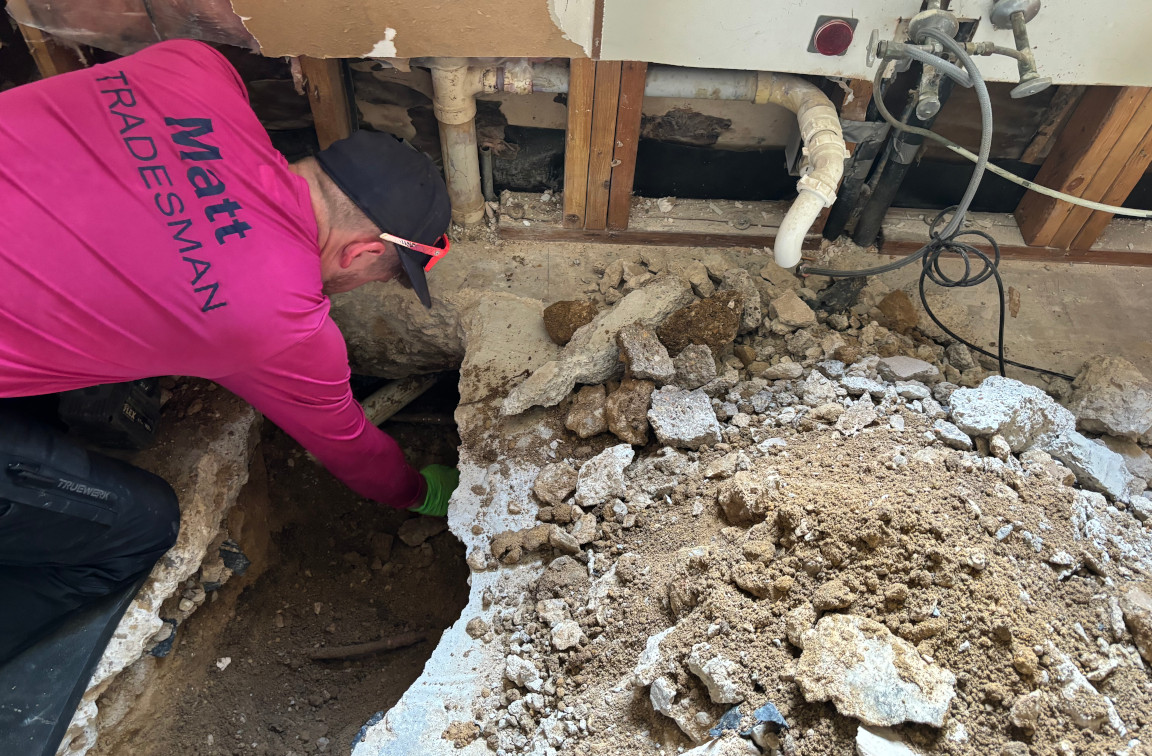
Here are the 4 types of sewer line repair and replacement that occur in most projects:
- Slab leak reroutes
- Slab leak tunnel repairs
- Capping a water line
- In-wall repairs
Read a plumbing quote like a Master Plumber
Slab leak repair is a complex job that requires years of training, local experience and advanced plumbing equipment. But it’s not rocket science, and your plumber should be able to explain it in plain English.
Here’s the cliff notes (do people still use cliff notes?) your plumber already knows.
Slab Leak Reroutes
Slab leak rerouting is a repair strategy where, instead of breaking through your home's concrete slab to fix a leaking pipe, a new, completely separate water line is installed to bypass the damaged section entirely. The old, leaking pipe is simply abandoned in place, sealed off, and left under the foundation.
The process involves 3 steps:
- The leak is precisely located using non-invasive methods like acoustic leak detection and a camera inspection.
- A new, more accessible route for the water line is carefully planned. This route often travels through your home's attic, interior walls, or along the exterior.
- New Schedule 40 PVC pipes are run along this path, and connections are made at the water source and the fixture. Your plumbing system is restored with minimal disruption to your home's foundation or flooring.
Cost drivers of slab leak reroutes
The number of affected fixtures is a specific driver of slab leak rerouting costs. A reroute's cost is not based on the size of the leak, but on the number of new plumbing lines that must be installed to restore service.
A reroute with multiple affected fixtures requires a more complex new pathway. Plumbers must navigate the new lines through walls, attics, or ceilings and ensure proper access points for each fixture. This means more time spent in tight spaces, more holes cut into drywall, and more meticulous work to connect the new lines while ensuring correct pressure and flow to each faucet or appliance.
Best use cases for slab leak pipe rerouting
- Multiple or Widespread Leaks: When a pressure test or camera inspection reveals several leaks or widespread deterioration in the old pipes under the slab, rerouting is the most effective long-term solution. It bypasses the entire problematic plumbing system, preventing a future "whack-a-mole" scenario of recurring leaks.
- Inaccessible Leak Locations: Rerouting is the best option when the leak is located under a major structure that is difficult or expensive to break, such as a load-bearing wall, a kitchen island, a large bathtub, or an entire section of expensive flooring. It allows for a permanent repair without risking structural damage or destroying valuable finishes.
- Desire for Minimal Disruption to Flooring and Foundation: Homeowners who want to avoid the noise, mess, and potential structural risk of jackhammering their concrete slab will find rerouting ideal. By abandoning the old pipes in place, this method preserves the home's foundation and original flooring.
When pipe rerouting isn’t a good solution
If you’re unable to run the new lines overhead due to complex roof geometry, fixture layout, or architectural features, rerouting is not an optimal solution for your leak.
Cathedral ceilings, in particular, are a bad use case for rerouting pipes for slab leak repair. New pipes are generally run through your walls up into the attic or ceiling area. Cathedral ceilings make this impossible.
Slab Leak Tunnel Repairs
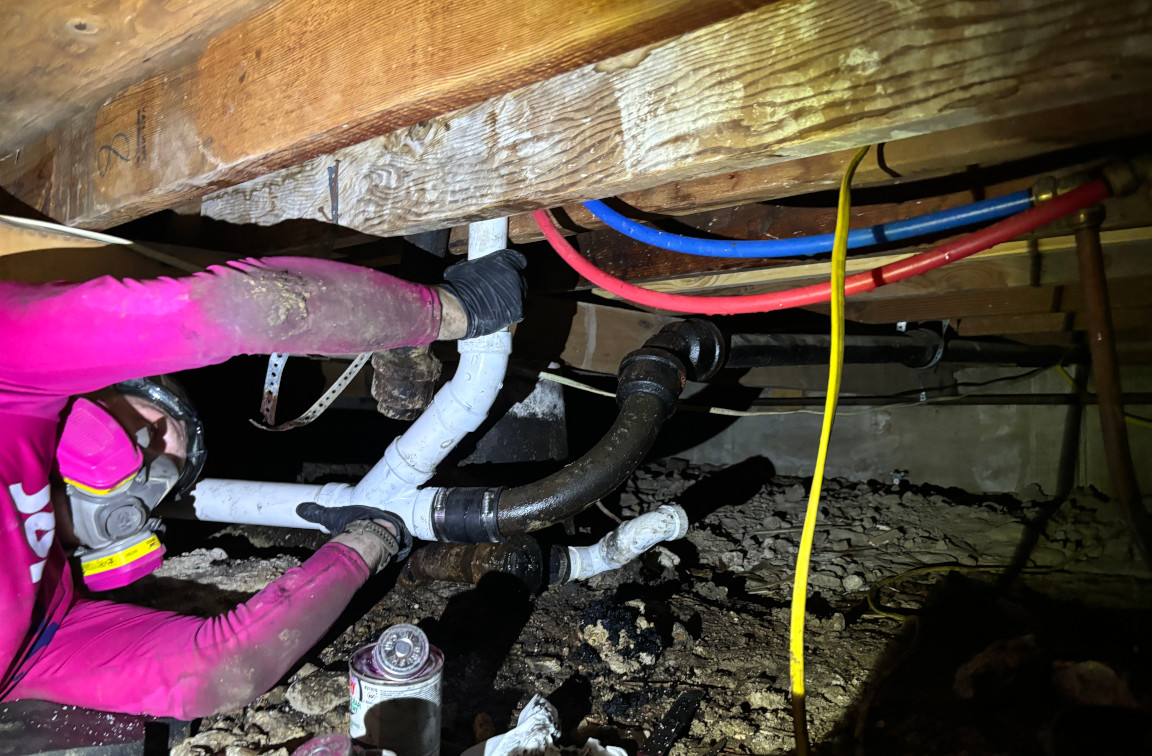
Slab leak tunnel repairs involve accessing a damaged pipe under your home's foundation by digging a tunnel from the exterior perimeter of the house, rather than breaking through the concrete slab and flooring from the inside. This is a common and often preferred method for performing a spot repair on a leak while completely avoiding interior disruption.
The process involves 4 steps:
- Detection: Our plumbers pinpoint the exact location of the leak with advanced technology: usually acoustic detection and an accompanying camera inspection via your sewer cleanout.
- Preparation: A trench is dug outside the foundation, and a tunnel is carefully hand-dug horizontally underneath the slab to the leak's location.
- Repair: Your plumber crawls into the tunnel to perform the repair.
- Restoration: Once complete, the tunnel is backfilled and the ground is restored.
Cost drivers of slab leak tunnel repairs
The cost of a slab leak tunnel repair is primarily driven by the length and depth of the tunnel required to reach the leak, as well as the soil conditions (like hard clay, rocky or sandy soil) and the complexity of the actual repair once the plumber is inside the tunnel.
Best use cases for slab leak tunnel repairs
- Isolated Leak in Otherwise Healthy Pipes: Tunneling is the most efficient solution when a single leak has been precisely located, and a camera inspection confirms the rest of the plumbing under the slab is in good, reliable condition. It's the ideal method for spot repairs.
- Preservation of Interior Flooring: This method is the best choice when a homeowner wants to preserve expensive, difficult-to-match, or sentimental flooring and cabinetry without any interior demolition, dust, or disruption.
- Cost-Effective for Deep Repairs: In some cases, tunneling is the most cost-effective option for repairing a leak that is located very deep under the slab, where rerouting would be more complex and expensive due to the length and number of lines involved.
When tunneling isn’t the best option
If an inspection reveals that the pipes under the slab are old, corroded, or have multiple leaks, tunneling is a poor investment. It leaves the rest of the aging plumbing in place, making future failures and more tunneling highly likely.
If a home has a history of foundation issues or if the tunneling process would compromise an already weakened area, a less invasive solution like rerouting is a much safer alternative to avoid exacerbating structural problems.
Capping Your Water Line
Capping a water line is the process of permanently sealing off a leaking pipe under the concrete slab and abandoning it in place. It is usually not a standalone repair, and generally exists as a crucial step in a larger slab leak rerouting strategy.
Imagine you have a single leak leading to your garage sink. You rarely- if ever- use the fixture. Wouldn’t you rather cap that individual line than spend extra money on more complex repairs?
Capping is how plumbers can effectively bypass and neutralize a problem pipe without the need for destructive and costly excavation of your foundation and flooring.
The process involves 3 primary steps:
- The leaking pipe is identified.
- A new water line is installed along a different path.
- Once the new line is in place, the old, leaking pipe is cut and sealed with a cap or plug at both ends: where it connects to the main water supply, and where it connects to the fixture it serves. This stops the flow of water to the compromised section, immediately resolving the leak and preventing any further water damage.
Cost drivers of capping your water line
The cost of capping a water line is heavily tied to the complexity of accessing the old pipe and installing the new one.
The most significant cost driver is where the old pipe needs to be capped. If the pipe can be accessed in an open attic or an unfinished utility closet, the cost is much lower. If a plumber has to cut into drywall, remove built-in cabinetry, or access a tight crawl space, the labor and time required for access and subsequent restoration increase significantly.
The material and diameter of the pipe being capped can affect the cost. Capping a plastic PEX pipe is generally a simpler, faster process than capping an older copper or galvanized steel pipe, which may require different tools and more complex soldering or fitting work.
Best use cases for water line capping
- Preventing Further Water Damage Without Breaking the Slab: Immediately stop a slab leak without any interior disruption to the home's foundation or finishes. This is the best use case when a homeowner's priority is to preserve their flooring.
- A Fixture That Isn’t Frequently Used (e.g. garage sink). If you’re certain to not use the affected fixture again (or rarely), capping the line is an optimal solution.
- Inaccessible Leaks: When the damaged pipe is located where demolition would be impractical, excessively costly, or structurally risky. By capping and abandoning the old line, you eliminate the need to break through expensive flooring, cabinetry, or concrete.
- Systemic Pipe Deterioration: Capping prevents the need for future in-slab repairs by replacing the entire problematic section with a new, durable Schedule 40 PVC line.
When capping your water line isn’t right for you
Make sure capping the line won’t damage the resale value of your home. While it may be tempting to cut the water to the half-bathroom upstairs that you never use, the next buyer will ask for you to repair the bathroom, or a hefty concession if it doesn’t work.
If you plan to use the affected fixture again, don’t cap the line.
In-Wall Repairs
In-wall repairs are a specific type of rerouting where the new plumbing lines are strategically run through the interior walls and/or attic of your home to bypass a leak under the concrete slab. This method is used when the leak is located under a foundation and a homeowner wants to avoid the significant mess and cost associated with breaking the slab or tunneling under it.
Sometimes, your slab leak isn’t quite “in the slab”. In-wall repairs occur in these cases, when the leak is closer to an interior wall of your home than the foundation itself. This eliminates disturbance of your foundation.
The process involves 4 steps:
- Detection: The specific leaking pipe under the slab is identified and then disconnected from its water supply and fixture.
- Planning: A plumber maps out a new, more accessible path for the water line. This route often involves running new Schedule 40 PVC piping through the attic and then down inside the walls to connect to the fixture (e.g., a sink, toilet, or shower).
- Rerouting: The old pipe is abandoned in place, and a new line is installed. This usually requires making small, strategic holes in drywall and ceilings for access points.
- Restoration: After the new line is installed and pressure-tested, the access holes are patched and sealed, restoring the wall to its original condition.
Cost drivers of in-wall repairs for slab leaks
Like slab leak rerouting, the number of affected fixtures greatly impact the cost of in-wall repairs. The more fixtures that are downstream from the leak, the more piping and labor are needed to run and connect the new lines, significantly increasing the overall cost.
Because in-wall repairs require cutting holes in drywall or ceilings, the cost of restoration is a key factor. A simple patch job will be much cheaper than extensive drywall repair, painting, or even replacing tile. The more access points required, the higher the restoration cost.
Best use cases for in-wall slab leak repairs
- Inaccessible or High-Cost Leak Locations: If a leak is under a kitchen island, a load-bearing wall, a large bathtub, or another permanent fixture that would be extremely difficult and costly to remove, an in-wall repair is the most practical solution. It allows you to completely bypass the inaccessible area without any foundation demolition.
- Preservation of Home's Interior: When a home has expensive, custom, or difficult-to-replace flooring (like original hardwood or unique tile) that would be destroyed by a traditional in-slab repair, an in-wall repair preserves the integrity and aesthetics of your home by containing all the work in the attic and walls.
- Preventing Future Leaks: This repair method is ideal for a home with aging pipes (e.g., old copper or galvanized steel) that have already had one or more leaks. By rerouting a new line, you're not just fixing the current leak—you're replacing a problematic section and providing a long-term solution that prevents future leaks from occurring in that area.
When in-wall repairs aren’t the best option
f the leak is in a shallow, easily accessible area with inexpensive flooring (e.g., under a concrete pad in a garage or an unfinished utility room), a traditional in-slab spot repair may be a more straightforward, faster, and cost-effective solution.
7 Most Common Causes of Dallas Slab Leak Repairs
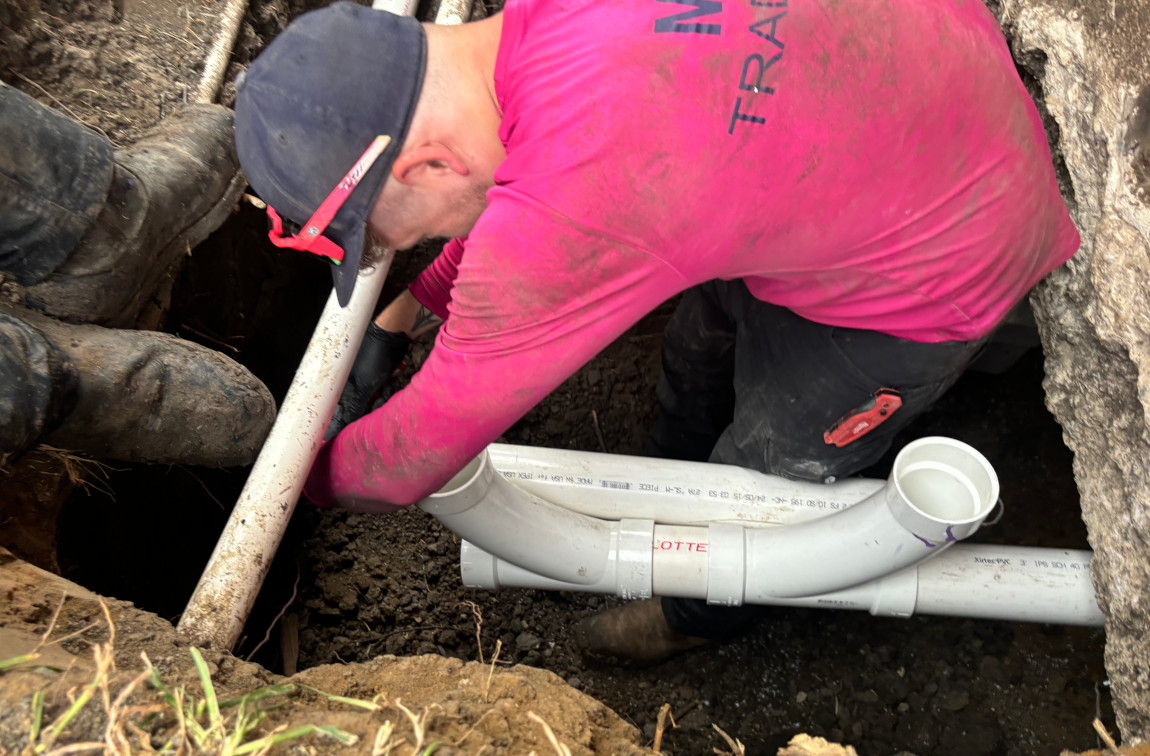
Our research team reviewed 5 years of slab leak repair service data from projects we completed in Dallas homes. These are the 7 most common causes of Dallas-area slab leak repairs:
- Pipe corrosion
- Shifting soil
- Hard water chemistry
- High water pressure
- Abrasion
- Aging pipe materials
- Improper installation
{{fast-plumbing-answers-warning-signs-of-a-slab-leak="/blogs/fast-plumbing-answers-warning-signs-of-a-slab-leak"}}
Pipe corrosion and electrolysis damage
Over time, minerals and chemicals in the water and surrounding soil can cause a chemical reaction that eats away at the pipe material, particularly in older copper or galvanized steel lines. This chemical reaction is called electrolysis damage.
This leads to multiple pinhole leaks that turn your pipes into Swiss cheese. These are often challenging repairs- when your plumber fixes one localized point of damage, another quickly appears.
Best repair option(s):
- Rerouting: In particular, slab leak rerouting that utilizes targeted capping is the ideal solution. Since corrosion is a systemic issue affecting the entire length of the pipe, simply fixing one pinhole with tunneling is often a temporary fix. Rerouting replaces the compromised pipe entirely, providing a permanent solution.
- In-wall repairs: If the corroded pipe sections are in your walls and not directly adjacent to (or in) your slab foundation, conduct in-wall spot repairs with Schedule 40 PVC.
Shifting soil
The expansive clay soil common in the Dallas-Fort Worth area swells when wet and shrinks when dry. This constant movement puts immense stress on the pipes, causing them to bend, crack, or separate at joints, leading to a leak.
Best repair option(s):
- Rerouting: Because soil movement affects the entire line, simply repairing one break with tunneling is risky. The soil can shift again and cause a new break right next to the repaired section
- In-wall repairs: If your pipe repairs can be accomplished without disturbing the soil around your foundation, in-wall repairs are a great option.
Hard water chemistry
Hard water contains a high concentration of minerals like calcium and magnesium- in Dallas, this shows up most commonly in limescale deposits on your faucets, in water heaters, and inside your water line.
This buildup can accelerate corrosion and contribute to low water pressure, which in turn stresses the pipe and leads to a leak.
Best repair option(s):
- Rerouting: The best solution for widespread scaling in your pipes. It bypasses the old, scaled pipe and replaces it with a new one that can be better maintained.
- Capping: If the affected pipe leads to a fixture that’s rarely used (like a garage sink), capping the water line will save you money.
{{why-does-dallas-have-hard-water="/blogs/why-does-dallas-have-hard-water"}}
High water pressure
Excessive water pressure puts a constant, high-stress load on all parts of your plumbing system. It can cause pipes to rupture at weak points, joints to fail, and can even contribute to the formation of pinhole leaks in older, already corroded pipes.
Best repair option(s):
- Rerouting: It removes the stressed and compromised pipe from the system and replaces it with a new Schedule 40 PVC line.
Pro tip for reducing water pressure: Dallas homeowners should consider installing a pressure reducing valve (PRV) to prevent the issue from recurring.
Abrasion
Abrasion occurs when a pipe rubs against a concrete slab, a rock, or even another pipe due to thermal expansion and contraction or minor ground shifts. This constant friction wears a hole in the pipe over time.
Best repair option(s):
- Tunnel repairs: This is a classic single-point failure. It allows a plumber to access the exact spot of abrasion and perform a spot repair without disrupting the home's interior.
- Rerouting (location-based): If the abrasion is in an inaccessible location, a reroute would be the necessary alternative.
Aging pipe materials

As copper, galvanized steel, and cast iron pipes age, they naturally become more brittle, susceptible to corrosion, and prone to pinhole leaks and cracks. This is the most common cause of systemic pipe failure, especially in older Dallas neighborhoods like Lakewood and University Park.
Best repair option(s):
- Full reroute: Since the entire system is nearing the end of its life, fixing just one leak with tunneling is a temporary fix, and a new leak is likely to form elsewhere soon
Improper installation
Errors made during the home's construction, such as a kinked or dented pipe, an improperly soldered joint, or a pipe laid in a way that causes it to rub against a rock, can lead to a leak years or even decades later.
These installation concerns usually affect a single point or short length of your pipe.
Best repair option(s):
- Tunnel repairs: Similar to abrasion, this is often a localized, single-point failure. Tunneling is a great option to access the specific point of improper installation and repair it without damaging your home's interior.
A Special Note About Slab Leak Detection
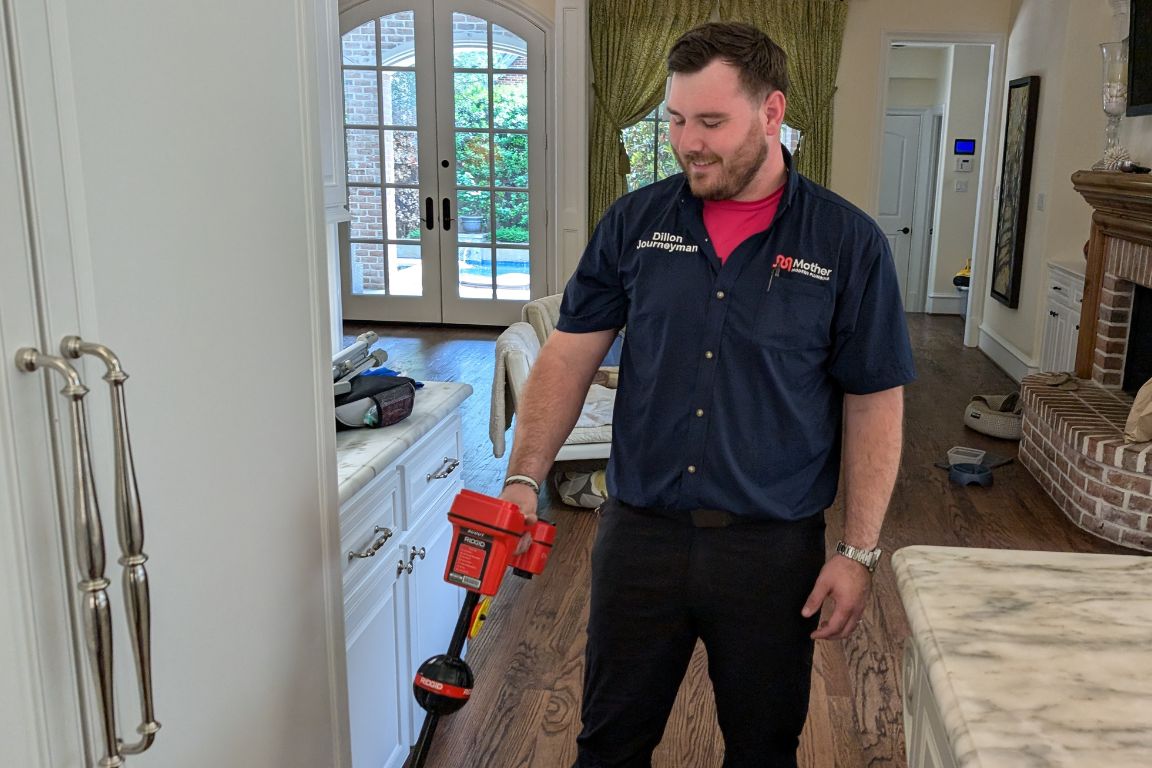
Slab leak detection is a critical service that uses specialized equipment to pinpoint the exact location of a leak under your home's concrete foundation. This precision is vital, as it allows plumbers to perform targeted repairs and avoid unnecessary, destructive digging.
We utilize a combination of 4 leak detection methods to achieve the most accurate results in each of your home’s plumbing lines:
- Hydrostatic Testing: This method is primarily used to check for leaks in a home's sewer or drain lines. A plumber seals the main sewer line and fills the system with water. If the water level drops, it confirms a leak in the drain system, though it does not pinpoint the exact location. This is a foundational test to determine if a leak exists in the drain lines.
- Acoustic & Electronic Listening Devices: These are highly effective and are considered a gold standard for pressurized water line leaks. Our plumbers use ultra-sensitive ground microphones and amplifiers to listen for the distinct sound of a leak—a hiss, drip, or gurgle—as pressurized water escapes from the pipe. By pinpointing the loudest sound, they can identify the exact location of the leak with great precision.
- Thermal Imaging: A thermal camera can be very useful for hot water line leaks. It detects temperature differences on the floor surface, revealing a warm spot where leaking hot water is heating the concrete. While it doesn't see the water itself, it visualizes the impact of the leak, providing a general location to be confirmed with acoustic listening devices.
- Camera Inspections: A camera inspection is critical for diagnosing drain line issues. A small camera is inserted into the sewer line to visually inspect for cracks, breaks, root intrusion, or other damage that could be causing a leak.
{{yard-leak-detection-fort-worth="/blogs/yard-leak-detection-fort-worth"}}
9 warning signs of a slab leak in Dallas homes
If you notice any of these 9 signs of a slab leak in your Dallas home or backyard, it’s a great time to schedule slab leak detection with Mother Modern Plumbing’s expert local plumbers:
- Unexplained increase in your water and utility bills
- You hear water running when the water is off
- Warm spots on the floor or under your carpet
- Damp spots on your floor and carpet
- Sudden decrease in water pressure
- Mold and musty odors in your floorboards
- Soggy patches near your home’s foundation
- Discolored cracks in your walls or foundation
- Standing water around the perimeter of your house
{{leak-detection="/services/leak-detection"}}
How to Get a Second Opinion on Dallas Slab Leak Repair Quotes
A home crisis like a slab leak isn’t the time to betray your trust. It’s the best time to earn it.
Unfortunately, slab leak repair is an easy job to “mark up”. Homeowners are stressed and want the job over with- the last thing you want to do is haggle over a quote.
At Mother, we believe every homeowner deserves a second opinion on slab leak repair bids. If you aren’t sure about your current quote, call our experts 7 days a week for a thorough review of your project.
You don’t have to take us at our word- we let our customers speak for us.
A real Dallas homeowner reviews our slab leak repair service
Call Mother: Take Control of Your Dallas Slab Leak Repair Project
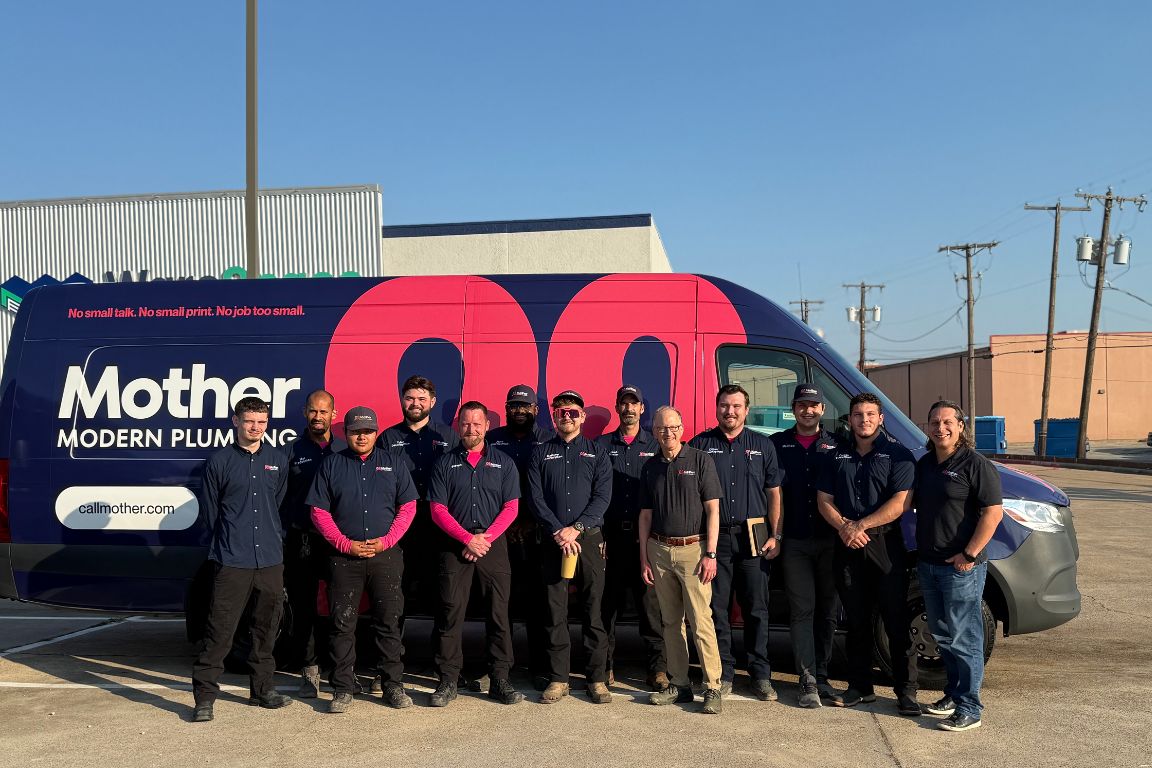
The best slab leak repair or replacement option for your home depends on the complexity of repairs, accessibility of the leak, and proximity to the slab.
The primary repair decision most homeowners have to make is between tunnel repairs and pipe rerouting. Capping a water line is an option for isolated leaks on rarely-used water lines, while in-wall repairs can save costly digging in and around your slab.
Dallas homeowners: need guidance in your slab leak repair journey? Want a second opinion on a pricey quote? Call us 7 days a week — we’ll give you insight, lasting solutions, and peace of mind.
{{slab-leak-repair="/services/slab-leak-repair"}}
Common Q’s about Water Leaks
What if my slab leak is in an inaccessible location?
For pipe leaks and damage that's extremely hard to reach (i.e. under your slab), pipe rerouting is the best alternative. Your plumber establishes a unique path for your new sewer line, then disconnects the damaged pipe section and seals it at both ends to prevent further leaks.
Why is there a warm spot on my floor?
A warm spot on your floor usually indicates a hot water line leak near your foundation. This is most prevalent in homes with concrete slab foundations. Schedule a hydrostatic test with your plumber to identify the leak's location.
What is the top warning sign of a slab leak?
If your water meter moves after you turn off the water supply, you likely have a slab leak. Other notable symptoms include an increase in your water bill, warm or cold spots in your flooring, and the sound of running water with no taps on.
Can I DIY slab leak repair?
No, you cannot DIY slab leak repair. Leak location requires precise thermal imaging, and attempting DIY slab repairs may void your insurance.
How can you tell if you have a slab leak?
These are the 5 most notable symptoms of a water leak in or around your slab:
- A noticeable increase in your water bill
- Water meter moves after water is turned off
- The sound of running water when no taps are on
- Warm or cold spots on your flooring
- Low water pressure
How long does it take to fix a slab leak?
Most simple slab leaks are fixed in 2-3 days. If your specific leak requires pulling a city permit, add an extra day to your project timeline.
If you’re rerouting your pipe, plan an extra day for drywall repairs. (Note: Drywall repairs are not included in the cost of plumbing work.)
Are slab leaks covered by homeowner’s insurance?
Homeowner's insurance companies don't love to cover leaks in or near your home's foundation. If you want your slab leak repair covered, you need to follow a precise set of steps to improve your odds of coverage.
Follow these 4 steps in order to increase the chances your slab leak is covered by insurance:
- Immediately contact your insurance provider in the event of a freshwater leak.
- Hire a master plumber for 2 key tests: water pressure testing and hydrostatic testing.
- Consult a structural engineer before and after plumbing repairs.
- File all necessary paperwork to your homeowner’s insurance.
How common are slab leaks?
It depends where you live. In most parts of America, slab leaks occur about once every 30 years. Dallas homes average one slab leak roughly every 15 years.
What is electrolysis damage in pipes?
Electrolysis damage occurs when electrical currents corrode metal pipes (usually copper pipes) in your plumbing system. This damage causes widespread corrosion in your pipes that's difficult to address with localized repairs. Install new Schedule 40 PVC to prevent electrolysis in your pipes.
When is sewer line rerouting the best option?
Choose to reroute your sewer line (instead of pipe replacement) when you encounter these five scenarios:
- The existing sewer line is near or under your slab foundation
- The sewer line is in a hard-to-reach or inaccessible location
- The cost of future repairs is highly reduced by rerouting
- Sewer line replacement would involve breaking your concrete slab or heavily damaging your floors
- The existing sewer line path fundamentally limits a desired addition or extension




